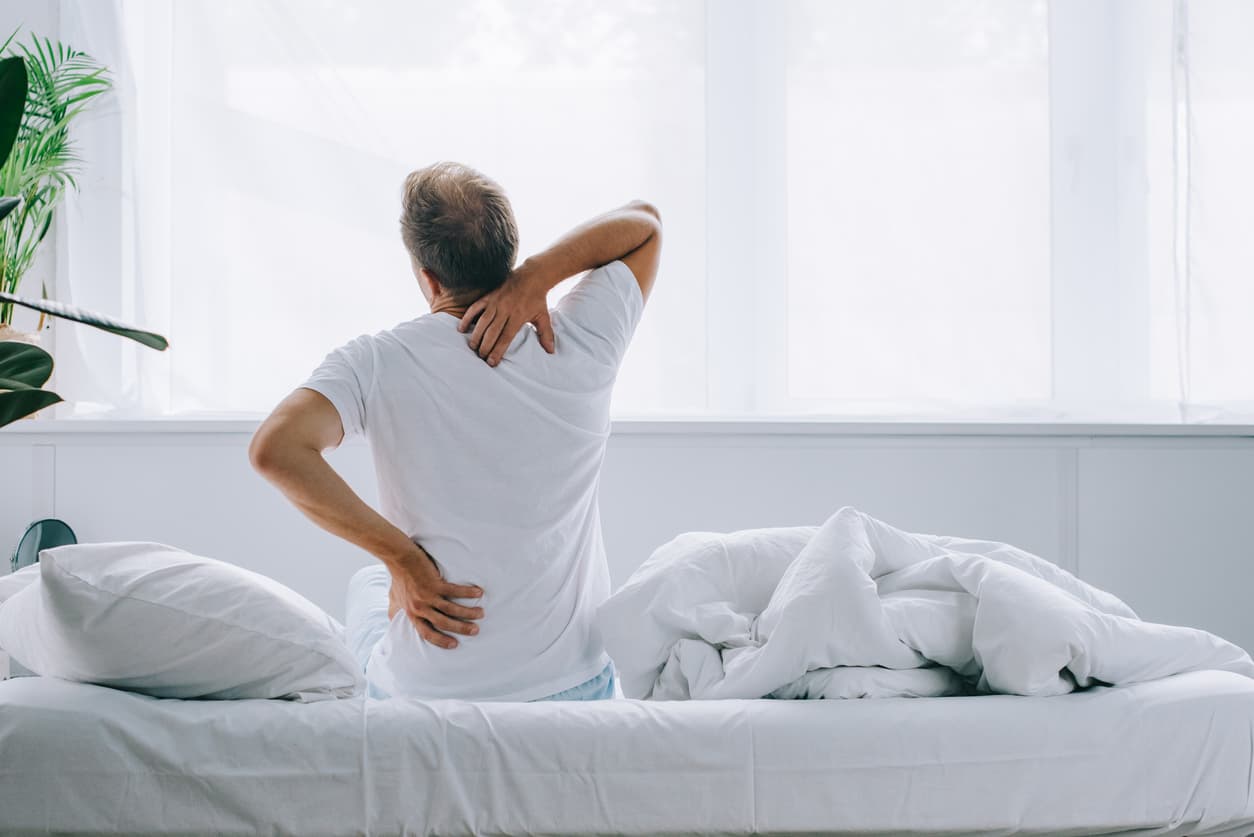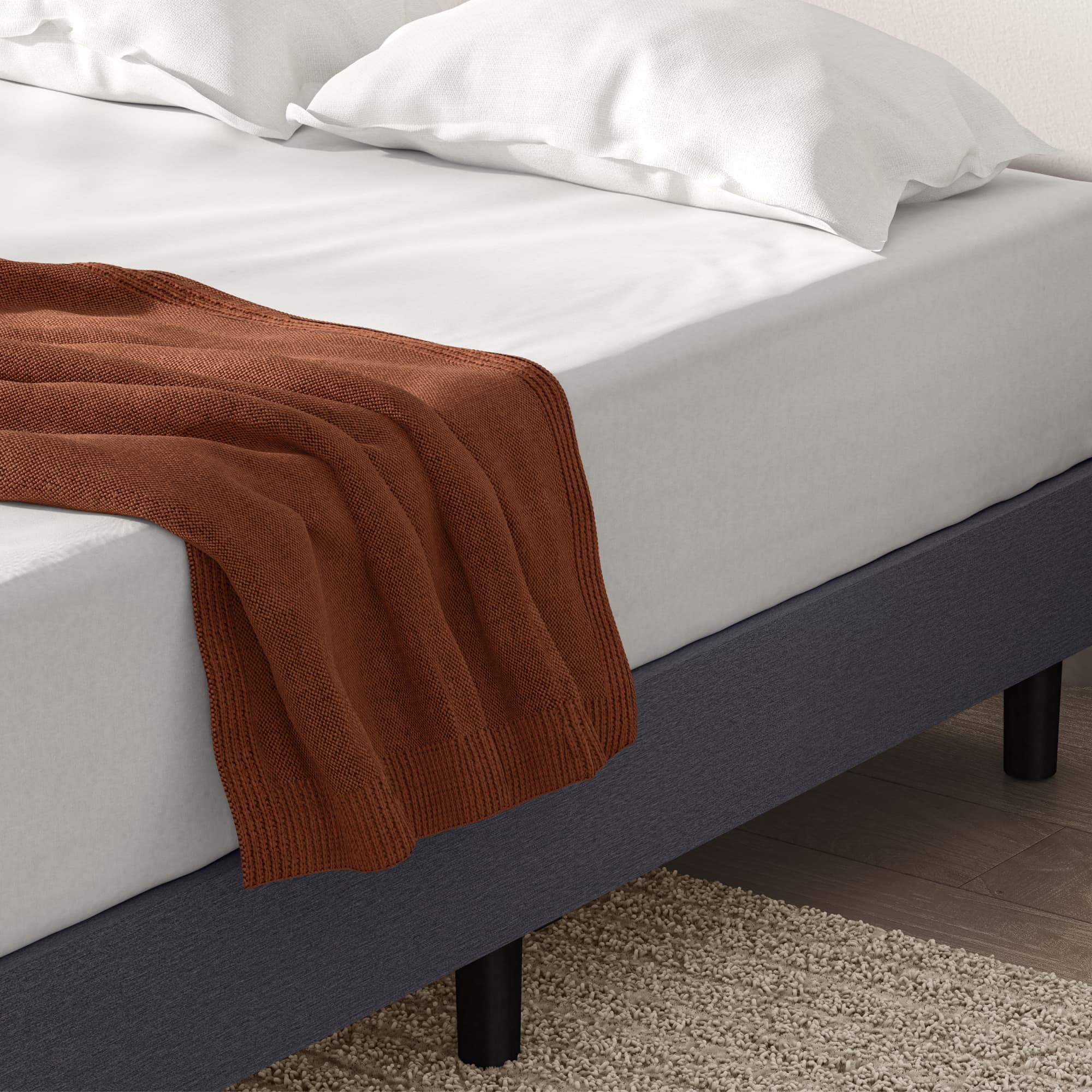We get it. Shopping for sheets can be challenging. The options are endless, so we've created this convenient guide to support you while you delve into the sheet department. Uncover everything you need to know about choosing the right sheets, including deciding on your fabric and learning about thread count. (Psst…With Leesa, you'll find something for everyone — and you don't even need to leave your house to get it.)
Choosing The Fabric
Choosing the right fabric for your bedding can be confusing, especially when trying to elevate your sleeping routine! Keeping things simple, we’ll investigate seven of the most popular materials and discuss their advantages, which kind of sleepers might benefit most from them, and how they feel when you touch them.
Cotton
Cotton remains one of the most popular sheet fabrics thanks to its breathability, softness, and durability. It dries quickly, holds up well over time, and works for all seasons.Our Cotton Blend Sheet Set blends cotton with rayon from bamboo, offering the best of both worlds—smooth, breathable comfort with a soft, cool feel that gets even better with every wash. It’s a great choice for sleepers who want lightweight, easy-care bedding that feels luxurious without being fussy.
Linen
Linen fabrics are highly breathable, absorbent, smooth, and comfortable to touch, with excellent water-repelling and cooling properties. It is a very durable fabric that becomes softer after each wash. Linen is ideal for warm summer nights or hot sleepers.
Flannel
Flannel sheets are made from cotton, wool, or synthetic fibers and are fuzzy to the touch. Flannel's unique weave creates a cozy, warm, and fluffy texture that conserves body heat, making it especially suitable for wintertime and cold sleepers.
Hemp Fiber
Fibers from the hemp plant are woven together to make hemp sheets. The strength of hemp fiber contributes to the sheets' exceptional durability and absorbency. These sheets are breathable and can be used in summer and winter to keep cool and warm. As the most eco-friendly product on the market and free of allergens and irritants, hemp is the ideal choice for children, people with asthma, and those with environmental sensitivities (such as dust).
Bamboo
Bamboo's durability, sustainability, and lightweight properties have become more prevalent in recent years. Bamboo sheets are made from rayon, lyocell, or modal fabrics and come with a sateen, twill, or percale weave. Bamboo sheets retain dye better due to their unique fiber, ensuring vivid colors over time. Moreover, bamboo sheets are breathable and help keep you cool as you sleep in the summer and warm during the winter. Bamboo is also gentle on the skin, making it ideal for individuals with sensitive skin.
Sateen
Sateen fabric features more vertical threads than horizontal ones, giving the sheets their signature silky and radiant appearance. The wrinkle-free nature of sateen sheets makes maintaining them a breeze. Sleepers who tend to get cold may benefit from sateen sheets since they trap more body heat, keeping them extra comfortable.
Percale
Percale is a cotton, polyester, or rayon fabric that is lightweight and closely woven. The material has a smooth matte finish to percale and a crisp, almost starched feel. Suitable for those who tend to sleep hot throughout the year, these sheets are highly breathable and are perfect for the summer. Furthermore, percale sheets become more tender and comfortable after they are washed.
What is Thread Count?
Thread count refers to the number of threads woven into an inch square of fabric. Weft weaves consist of horizontal strands of yarn, whereas warp weaves consist of vertical strands. Thread counts are the result of warp and weft yarns being added together.
Generally, higher thread counts are better sheets, but this is often true only for cotton sheets; remember that different materials do not always have similar thread counts. High-quality sheets in the 300-400 range provide luxurious softness and a silky feel.
Why Does Thread Count Matter?
When making product comparisons, thread count alone is no longer the best indicator of a sheet's quality. You should instead consider the sheet's material and fiber quality to determine its softness and durability and look to see if it was created from natural resources or synthetically. Finally, make sure it feels good to you!
Shop According to Your Sleep Needs
Hot Sleeper
If you are a hot sleeper, we recommend breathable, temperature-regulating fabrics that increase airflow and regulate moisture. These sheets are made from organic cotton, linen, or bamboo fabrics. Sleep will become cooler, deeper, and more restorative as a result.
Cold Sleeper
We recommend heavier and denser sheets that trap or regulate your body temperature if you sleep cold. To keep you warm throughout the night, we recommend using flannel, fleece, or microfiber sheets. They are thick, heavy, and cozy and will provide a sound and warm sleep throughout the night.
Get a Better Night’s Sleep with Leesa
You might not even notice your sheets, but they can significantly impact your sleep quality and mental and physical health! With the correct sheet, you can reduce stress and anxiety and maintain a comfortable body temperature throughout the year -- especially in wintertime. So what do you say? Get a 30-day risk-free trial of the Leesa sheet set! In no time, you'll bid farewell to shivers and sweats and welcome the day feeling refreshed!
FAQs
How to Wash Bed Sheets?
Before washing your sheets, remember that the fabric used to make them will influence how to clean them the best. To ensure the durability of your sheets, we recommend reading your sheet’s specific instructions, on the label, before tossing them in the washing machine.
Silk and satin should be washed once in a mesh bag on your laundry machine's delicate cycle. Alternatively, silk and satin sheets can be washed by hand. When cleaning silk and satin sheets, use a gentle detergent and let them air dry. Keep your sheets away from direct sunlight if you hang them outside. When using a dryer, use the air-dry setting and check every five minutes to ensure the silk dries quickly.
Linen: Using a regular liquid detergent, wash linen sheets in cool water on the permanent press cycle in your washing machine. You should pre-treat any stains before you wash them. You can air-dry linen or use your dryer's air-dry setting with wool dryer balls. When your sheets are slightly damp, take them out and iron them thoroughly.
Bamboo sheets should be washed in cold water, using a gentle wash cycle with an organic and biodegradable liquid detergent. Whenever possible, hang your sheets outside or on a drying rack instead of using a dryer. If you use a dryer, make sure your dryer is set to low heat and a gentle setting.
Cotton sheets should be washed with cool to warm water temperatures and with mild detergents or fabric softeners; however, you should follow the instructions on the sheet labels. Instead of using bleach, use alternative methods such as lemon juice on stained sheets to prevent them from drying out and getting damaged. Now and then, it's a good idea to wash your sheets on a hot water cycle, especially if you or your partner is sick. If you want your sheets to remain crisp and fresh, hang them to dry. Alternatively, you can dry your sheets on a medium setting and, if you prefer, with dryer sheets. To avoid wrinkles, fold your sheets once they have dried.
Where to Buy Bed Sheets?
In most department stores, sheet sets are available in their bedding departments. Even though we might be biased, we think you should buy your bed sheets from us. Our sheets were designed to fit Leesa mattresses snugly, so if you have or plan on purchasing a Leesa mattress, we can guarantee sheets that will latch onto your bed regardless of movement.
What is a Good Thread Count for Sheets?
A thread count of 200 to 400 is considered an excellent, comfy cotton sheet. However, the type of fabric and weave will have an impact on the appropriate thread count of that particular sheet.
What Thread Count is Softest?
To determine the softest sheet, you should consider what materials were used rather than thread count alone.
Cotton is the most common and durable fabric and, when 100% cotton, will continue to soften with each wash. The silky texture of sateen additionally contributes to the creaminess of our sheets. After initial use, linen may be rougher than other fabrics, but it will get softer. Linen sheets are also sold pre-washed, which will ensure they are immediately smooth. A naturally eco-friendly fabric, bamboo is also soft to the touch and will only become softer after every wash.



.png&w=3840&q=75)